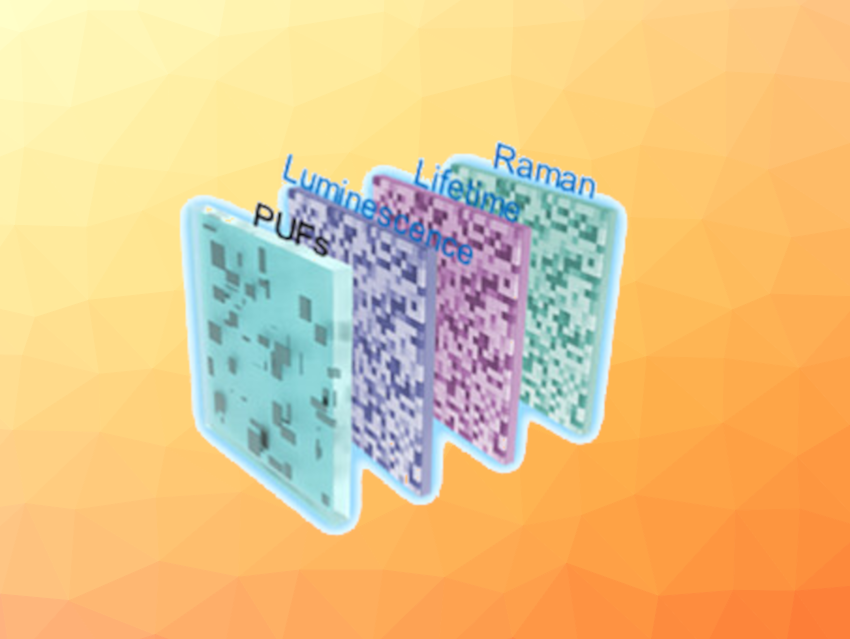Rare-earth luminescent complexes combine the useful luminescent properties of rare-earth ions with the high configurability of organic molecules. This allows their use in variety of applications. They can also for larger structures together with nanomaterials that have their own interesting optical properties. Together, this could be used to create so-called physically unclonable functions (PUFs), which are materials that have unique, inherent, and fingerprint-like physical properties that can be used for anti-counterfeiting measures.
Pingru Su, Yu Tang, Lanzhou University, China, and colleagues have developed a method for the electrostatic co-assembly of Ag nanoparticles (Ag-NPs) with positively charged Eu3+ complexes. The Eu3+ serve as an “ionic glue” binding to the negatively charged Ag-NPs. The resulting assembly Eu/Ag-NPs composite shows a boosted luminescent quantum yield and Raman signal intensities, and a modified luminescence lifetime compared with the “pure” Eu3+ complex via surface plasmon resonance effects.
By drop-coating a dispersion of Eu/Ag-NPs onto substrates, the team created a new type of PUF label. This label allows for the quick retrieval of authentication codes using confocal Raman, fluorescence, and lifetime imaging. It supports the customization and integration of multiple authentication keys, enhancing anti-counterfeiting security.
- Electrostatic Self‐Assembly of Ag‐NPs Mediated by Eu3+ Complexes for Physically Unclonable Function Labels,
Yao Kou, Yanan Guo, Lijuan Liang, Xue Li, Yifan Wang, Pingru Su, Chun‐Hua Yan, Yu Tang,
Aggregate 2024.
https://doi.org/10.1002/agt2.701




